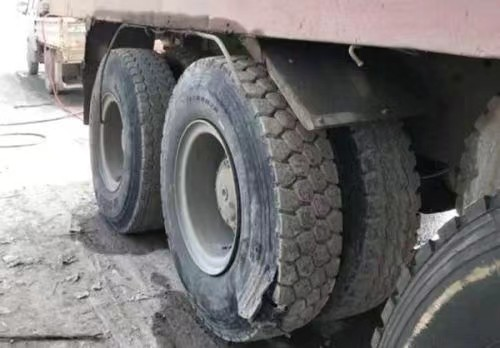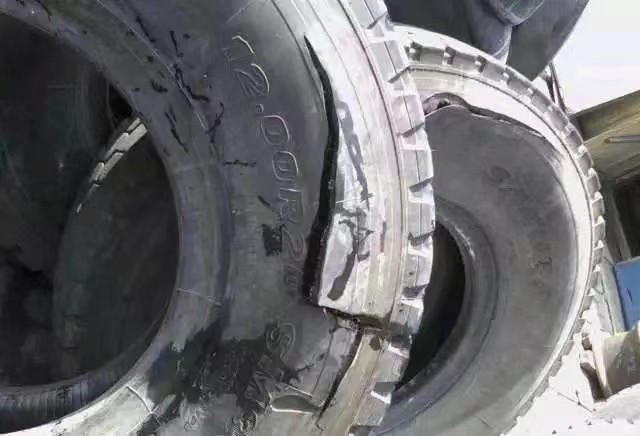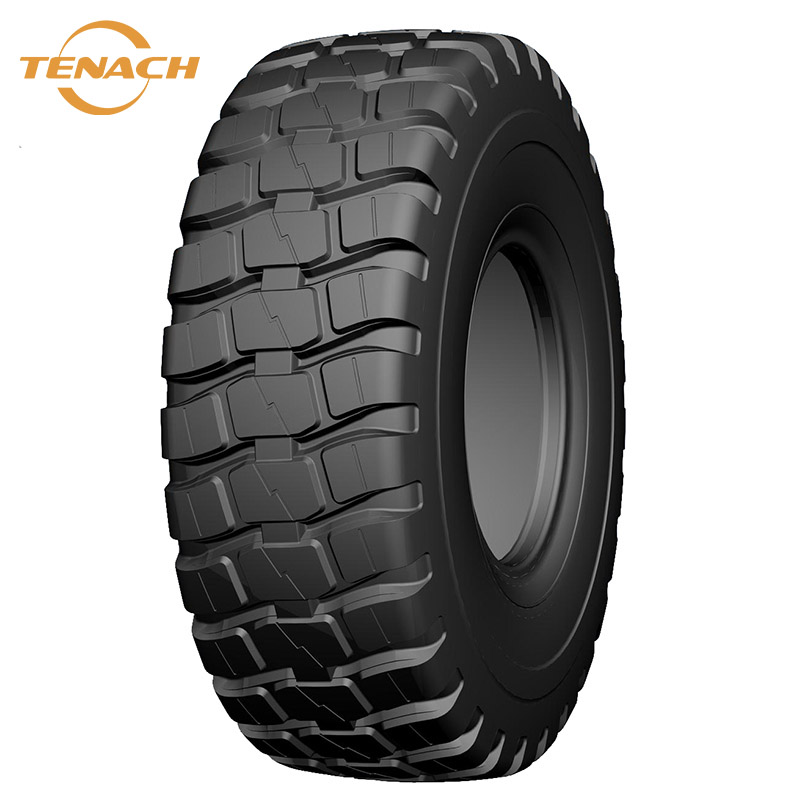Analysis on Delamination Failure of Truck Tire Tread
A: External reasons
There are many external factors that affect the performance of truck tires, mainly including tire inflation pressure, load, vehicle speed, road conditions, etc.
A1 Tire inflation pressure
If the inflation pressure of the tire is too low, it will cause the tire to run out of air, and the two sides of the tread near the shoulders will be severely worn. In the case of severe air deficiency, the carcass cord will be fatigued and fractured, resulting in a tire blowout; if the inflation pressure is too high, it will not only lead to Severe wear in the middle of the tread will also cause the tire innerliner compound to move toward the carcass.
The infiltration of the cord causes the airtightness of the inner liner to decrease, allowing the gas to penetrate into the tread rubber to form local delamination. Therefore, tire inflation pressure should be kept within the recommended reasonable range.
A2 Load
The load that the tire can bear is also determined when the tire is designed and marked on the tire. If the load on the tire exceeds the design value, it will cause the carcass cord and bead wire to be overloaded, which is easy to cause failures such as bead delamination, fatigue fracture of the carcass cord, and in severe cases, the bead wire will break, and the tire will break from the rim. Dangerous situation of falling out. When the tire inflation pressure is in the normal range, the carcass cord will be seriously deformed due to overloading, indicating lack of air. For overloaded tires, when the vehicle turns, the lateral force on the tire is greater, and the shear stress between the tread and the belt layer also increases, which is more likely to cause delamination.
A3 Speed
The maximum speed that a tire can bear is also determined when the tire is designed, and there will be a tire speed rating on the tire. This marking refers to the maximum speed at which the tire can carry a specified load under specified conditions. If the tire is overloaded and still runs at the maximum speed indicated by the speed rating, the heat inside the tire will be severe and cannot be dissipated, causing the tire compound to become hot and softened and lose its mechanical properties, eventually leading to delamination and other failures.
A4 Road conditions
Different road conditions have different effects on tire performance. On the flat road of the expressway, the speed of the vehicle is fast, and the tires are running at high speed, which is more likely to generate heat. If the heat cannot be dissipated in time, it is easy to cause the tires to become hot and soften, resulting in delamination. On rough roads with small stones or small nails, the tire is easily oxidized due to the water seepage of the steel belt layer due to the inclusion of stones or nails, and eventually the tread delamination failure occurs. On off-highway rough roads with potholes and large stones, tires are prone to blowout due to the impact of the ground or stones, causing the steel belt to break.
B Internal reasons
B1 Tire Design
Tire design consists of structural design and formula design. The structural design includes the shape and number of bead wires, the shape and size of apex, the wire spacing and number of carcass cords, the inclination angle and number of belt steel wires, the number and width of belt layers, and the The shape and size of the shoulder pad and the thickness of the tread compound and the shape of the blocks, etc. The advantages and disadvantages of tire structure design will directly affect the
affect its performance. The formula design includes the formula design of the rubber compound of each part of the tire. The physical and chemical properties required for the compound in different parts of the tire are different. The choice of steel cord will affect the performance of the bead wire, the carcass and the belt.
The structural design and formula design of the tire are the main internal factors affecting the performance of the tire.
B2 Tire manufacturing
Tire manufacturing is mainly divided into four processes: mixing, extrusion, molding and vulcanization. If there is a problem in any process link, a substandard product may appear. If the substandard product is not checked out for repair or scrap, once it is sold and Use, there will be serious consequences.
If the problems in the tire manufacturing process are not discovered and dealt with in time, the tire performance will be poor even if it is used under normal external conditions.
(From the tire industry)
# OTR TIRES # HEAVY TRUCK TYRE # SOLID TIRE # MINING DUMP TRUCK TIRE


























































